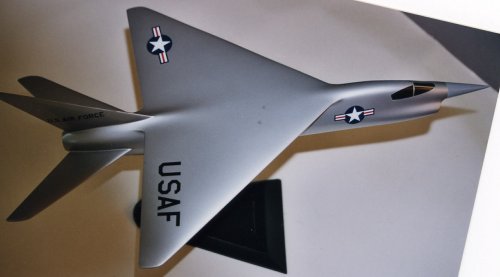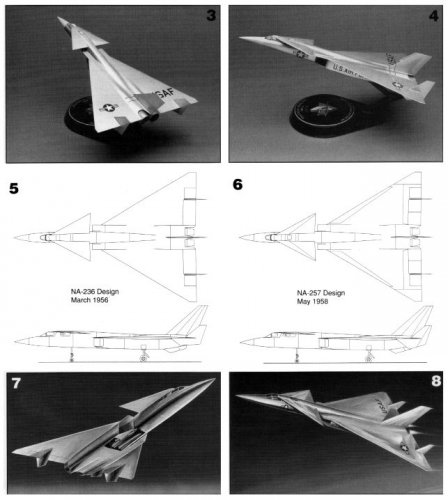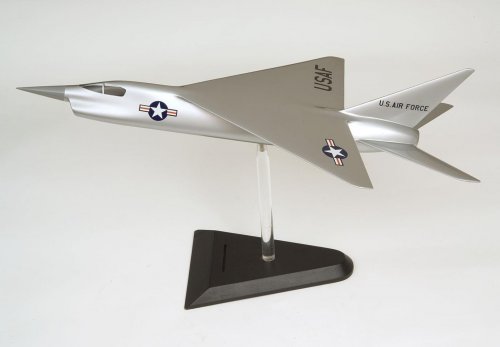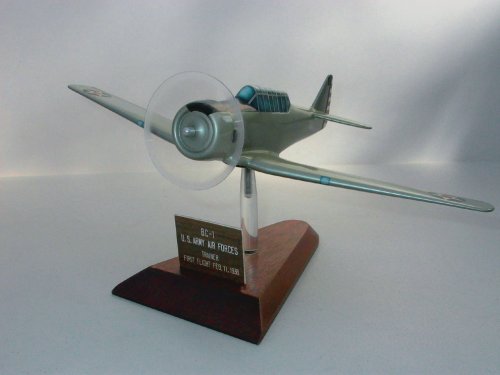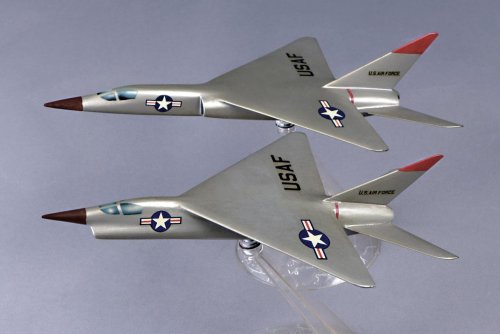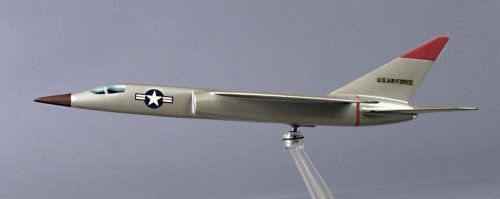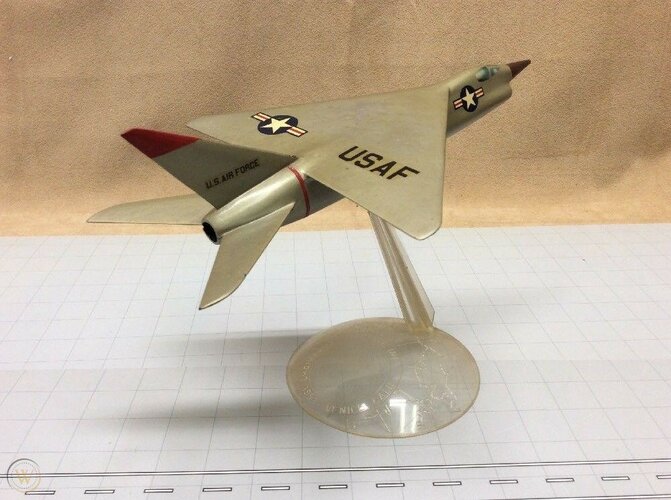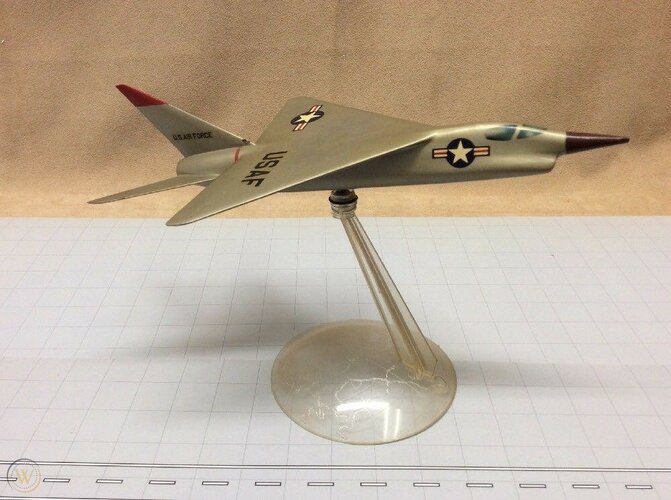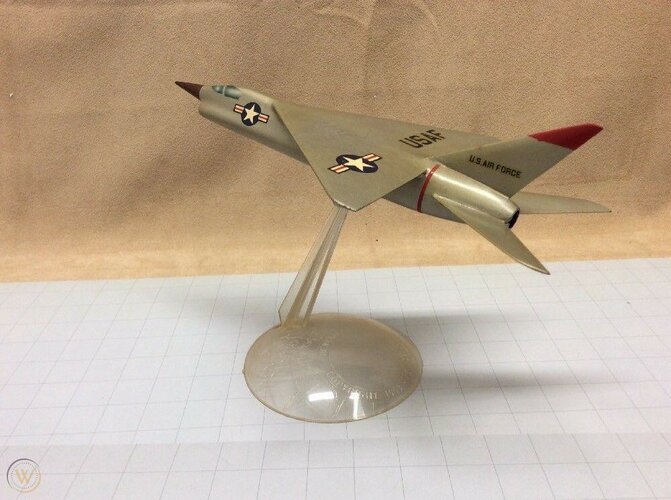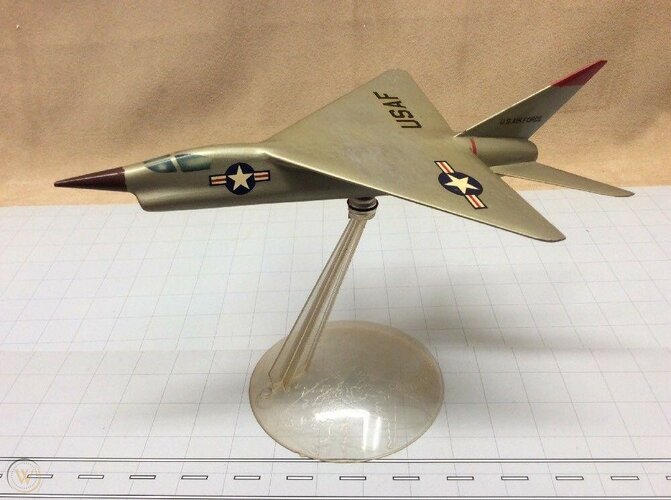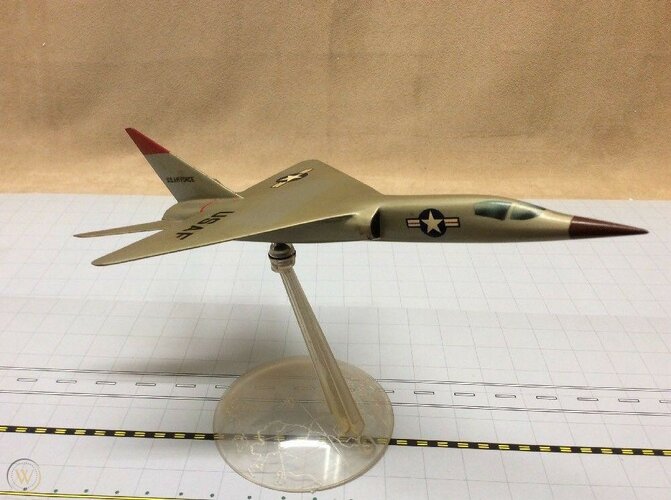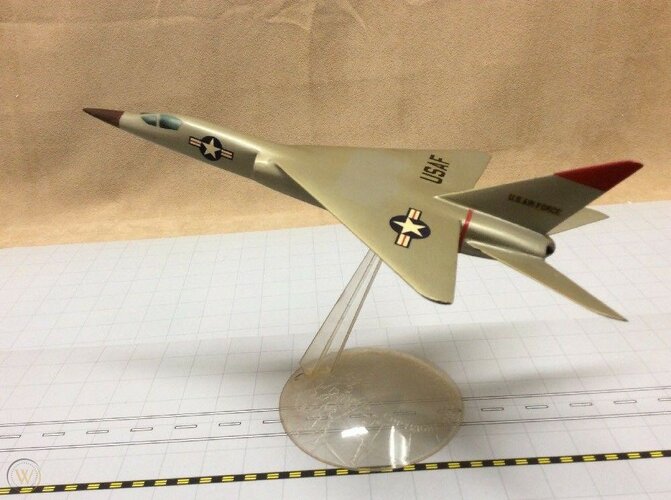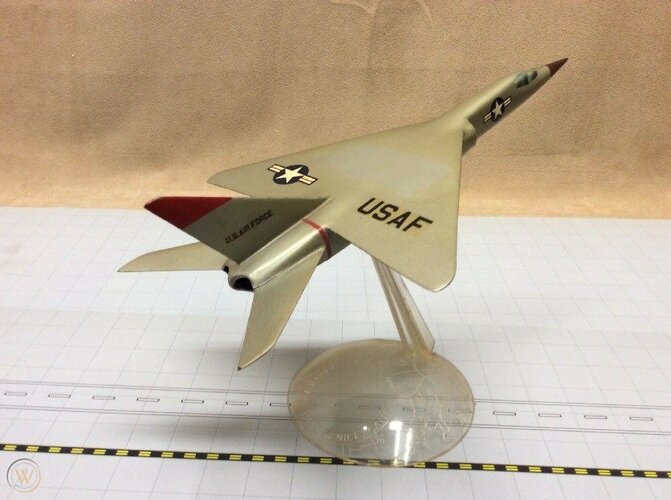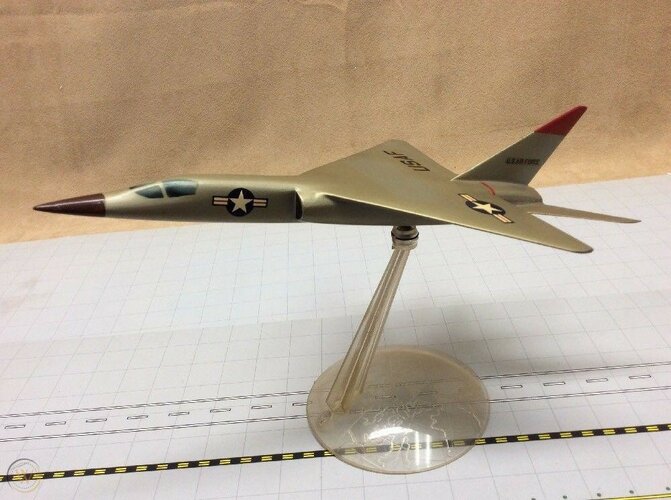- Joined
- 27 December 2005
- Messages
- 17,741
- Reaction score
- 26,321
From Tony Buttler.
The first design is a delta wing supersonic fighter. I have no information at all but, looking at the features, I have stated in the book that it might be NAA's rival to the F-102 competition. It has no gun, what appears to be a weapons bay and a single engine (all similar to the F-102) and some of the external features put in into the 1950/51 timescale. The fact that it was modelled means that it was probably an important proposal, so that is my judgement. I know this is dangerous because someone else will go and say that it is definately NAA's proposal without confirmation, but I have to do this to prevent too many pictures of 'an unidentified model' in the book.


